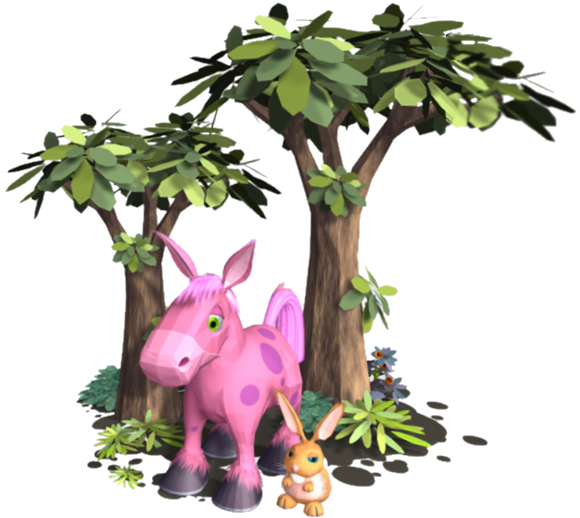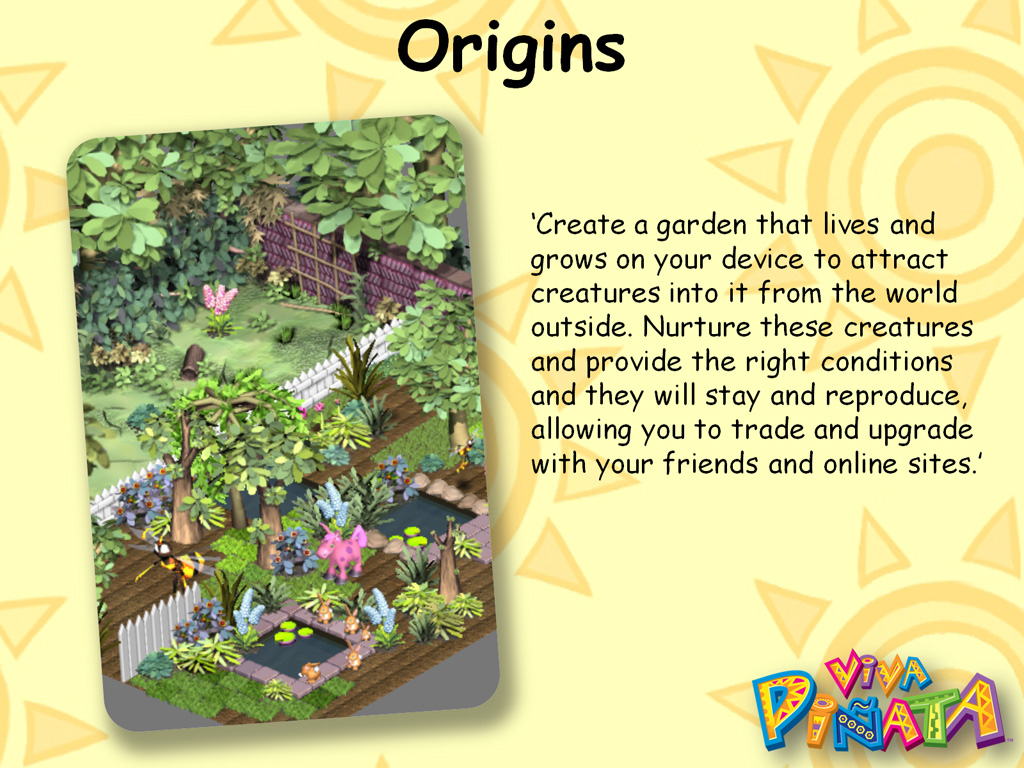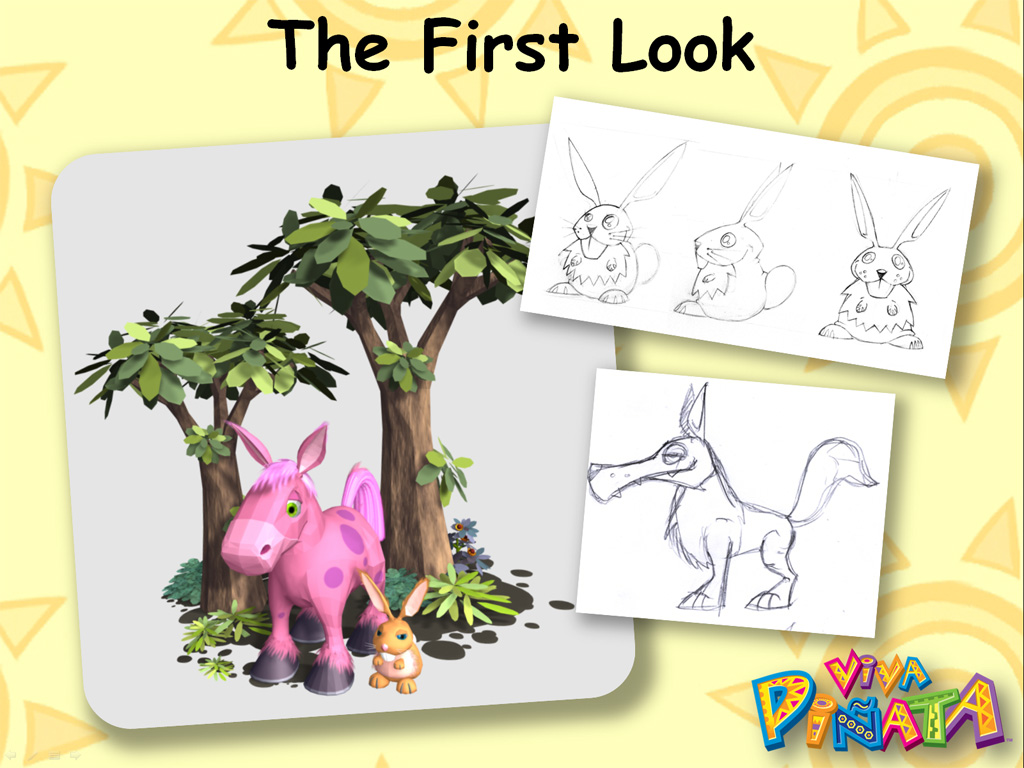Rare Roots: The Making of Viva Piñata

Navigation:
Part One: Origins
Part Two: Evolution
Part Three: Outsiders
Part Four: Offspring
Part Five: Moving On
Part One: Origins
On 1st December 2006, a brightly-coloured garden simulator for Xbox 360 finally hit the shelves in Rare’s homeland, the United Kingdom. This game was, of course, called Viva Piñata.
Since its launch, a dedicated and committed group of fans have worked tirelessly to find every secret, discover every Wildcard and perfect their digital green-fingered skills.
To mark a year of VP in the UK (and slightly more elsewhere) we present some rarely-seen artwork spanning the game’s entire lifetime. And so we dive straight into Part 1: entitled ‘Origins’, this slide shows the real beginnings of Viva Piñata.
 [View Original Full-size Image]
[View Original Full-size Image]
On the right-hand side is the original design document written by Tim Stamper many, many years ago. Although short, it still puts forward the core gameplay seen in today’s Viva Piñata: gardening, animals and the ability to trade. During this early period, Xbox Live had not really taken off to the extent that you see today and so the chosen platforms were mobile phones and PDAs. The screenshot hearkens back to this time.
If you look closely at the image, you can see that there were already trees, flowers and ponds available to the discerning gardener. As for animals, a pony and a warren of rabbits play by the water’s edge. The more eagle-eyed may also be able to spot a character or two borrowed from Banjo. When concepting a new product it can be prudent to borrow assets wherever possible to get things up and running quickly.
 [View Original Full-size Image]
[View Original Full-size Image]
This second image provides a closer look at the animals in that screenshot. On the right of the image are Ryan’s concept sketches. His first batch of animals were based around simple cartoon characters with a pastel colour spin and, as you can see, don’t resemble the piñatas that you know and smash today at all.
In the main image you can find a cute little bunny being shadowed by a larger pink horse (or pony, hard to tell). These both made it to the final cut but with drastic changes – the rabbit alone changed colour, style, posture and size. But this was still too conventional, and easy to lose in the mass of games that featured animals at the time. In his bid to find a truly unique style, Ryan went back to the drawing board and Part Two will demonstrate what he came up with.